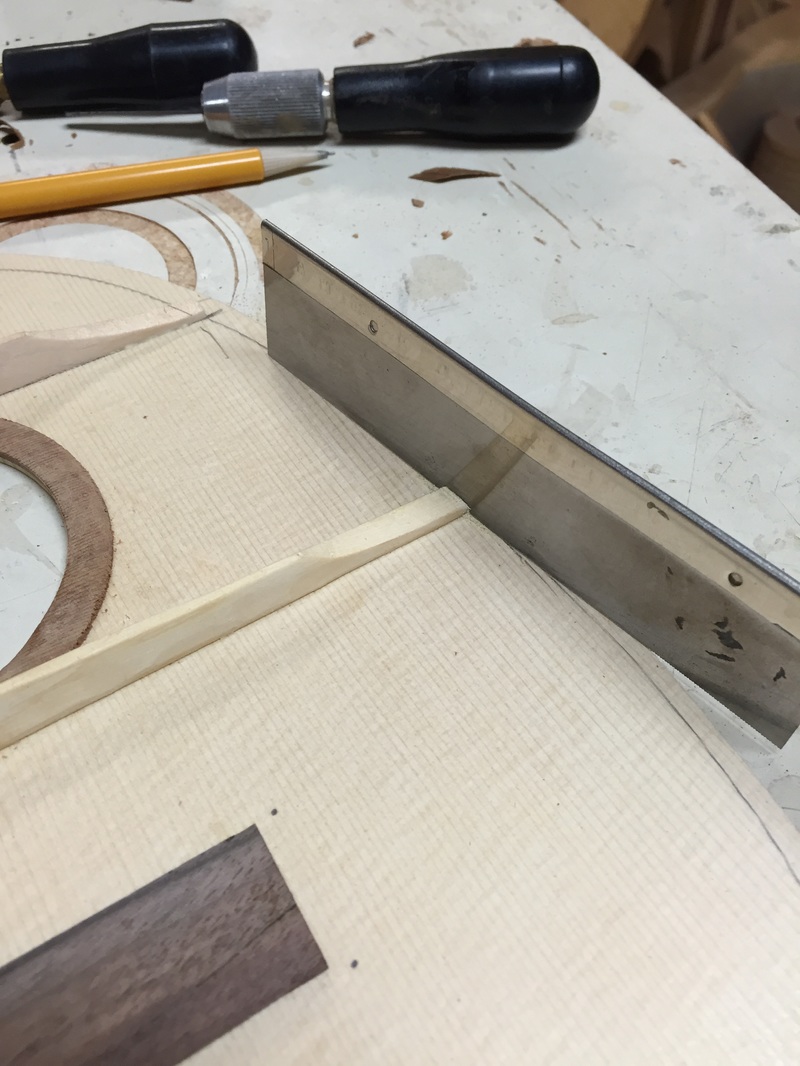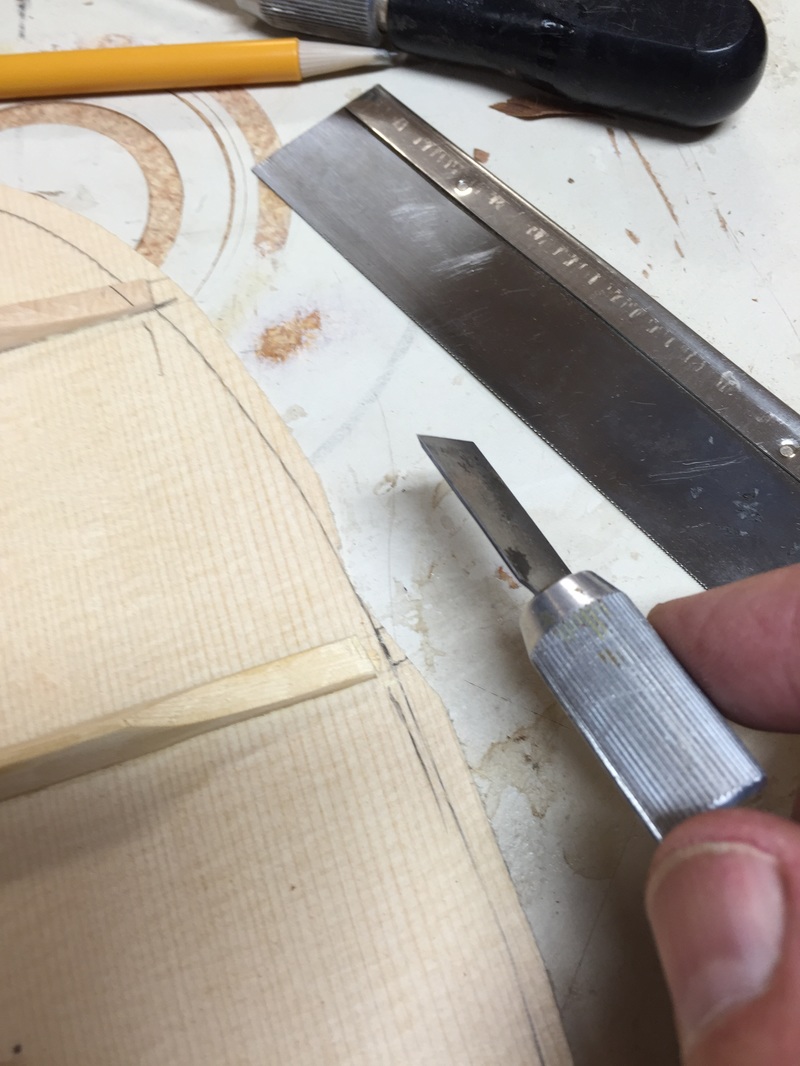In my last post I said the soundboards were ready for the necks to be attached. I forgot two important items
I forgot the protective ring around the sound hole and the hardwood brace that sits underneath the saddle providing some tough walnut to prevent the strings pulling through.
Notice my high tech weights to hold the glued pieces down. Beach stones from a pending art project came in handy.
Notice my high tech weights to hold the glued pieces down. Beach stones from a pending art project came in handy.
Here they are- glued fast. The purpose of the Cedar ring with grain going crosswise in opposition to the grain of the Spruce is insurance against a spruce split at the sound hole. May not be necessary but I want this to be a tough travel capable instrument built to take punishment.
The walnut patch strengthens the bridge, provides a hard wood for the knots of the (through-hull) strings to come up against, and perhaps perfects sound transmission and top vibration.
The walnut patch strengthens the bridge, provides a hard wood for the knots of the (through-hull) strings to come up against, and perhaps perfects sound transmission and top vibration.
That ring brace is thicker than it needs to be, and the edges are abrupt. I want to make it as un-noticable as possible so I am trimming down both edges with a square blade Exacto knife.
Now finish it up with a sanding stick so when you stick your finger in the sound hole you hit smoothness.
| One final task before attaching the necks. The ends of the cross body braces need to be trimmed to proper length to accept the sides. Above, I mark the cut off place by holding a side to the drawn line. Then, with a fine tooth Exacto saw I saw the brace through | These are great little saws. | Now remove the sawn tip and clean up the glue joint with the square blade |
And now the sound boards are complete and indeed ready for the necks. That will happen tomorrow. Once the necks are attached the sides can go on. I will have to get out the bending gear shortly.








